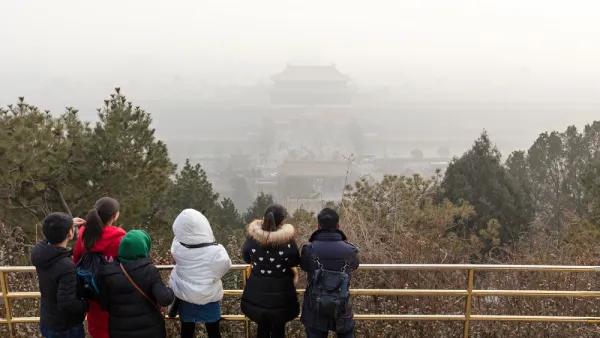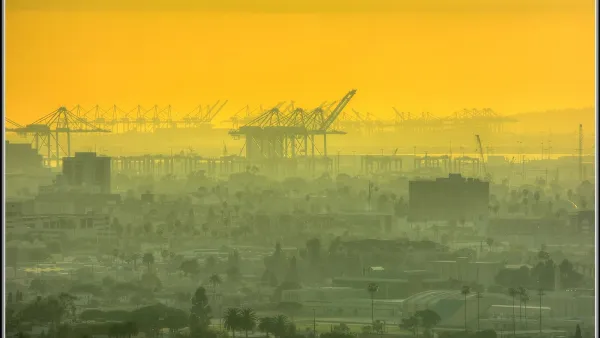Chinese and Indian cities are known for having some of the most polluted air in the world. You've likely heard about Beijing's severe smog; but in Delhi, where pollution levels are regularly higher, the hazardous air gets little notice. Why?
"Lately, a very bad air day in Beijing is about an average one in New Delhi," observes Gardiner Harris. But you wouldn't guess that's the case if you followed the international media or spoke with Delhiites. Even though "India has the world’s highest death rate because of chronic respiratory diseases, and it has more deaths from asthma than any other nation, according to the World Health Organization," you rarely hear mention of the air pollution problem by public officials or Delhi residents.
Why does Beijing's bad air get so much more attention? Some point to the Chinese government's efforts to keep environmental information from the public. “I think when you have the sense that they’re hiding something, it galvanizes public attention in a counterintuitive way,” said Ananth Krishnan, the China correspondent for The Hindu. “I don’t think the Indian media has given enough attention to this issue," he added. "I remember an Indian environmental scholar visited Beijing a few months ago, and he was surprised that pollution was getting so much attention in the press here."
"Coverage of air quality by the Indian news media 'will have to change very soon,' Mr. Krishnan said."
FULL STORY: Beijing’s Bad Air Would Be Step Up for Smoggy Delhi

National Parks Layoffs Will Cause Communities to Lose Billions
Thousands of essential park workers were laid off this week, just before the busy spring break season.

Retro-silient?: America’s First “Eco-burb,” The Woodlands Turns 50
A master-planned community north of Houston offers lessons on green infrastructure and resilient design, but falls short of its founder’s lofty affordability and walkability goals.

Delivering for America Plan Will Downgrade Mail Service in at Least 49.5 Percent of Zip Codes
Republican and Democrat lawmakers criticize the plan for its disproportionate negative impact on rural communities.

Test News Post 1
This is a summary

Test News Headline 46
Test for the image on the front page.

Balancing Bombs and Butterflies: How the National Guard Protects a Rare Species
The National Guard at Fort Indiantown Gap uses GIS technology and land management strategies to balance military training with conservation efforts, ensuring the survival of the rare eastern regal fritillary butterfly.
Urban Design for Planners 1: Software Tools
This six-course series explores essential urban design concepts using open source software and equips planners with the tools they need to participate fully in the urban design process.
Planning for Universal Design
Learn the tools for implementing Universal Design in planning regulations.
EMC Planning Group, Inc.
Planetizen
Planetizen
Mpact (formerly Rail~Volution)
Great Falls Development Authority, Inc.
HUDs Office of Policy Development and Research
NYU Wagner Graduate School of Public Service




























